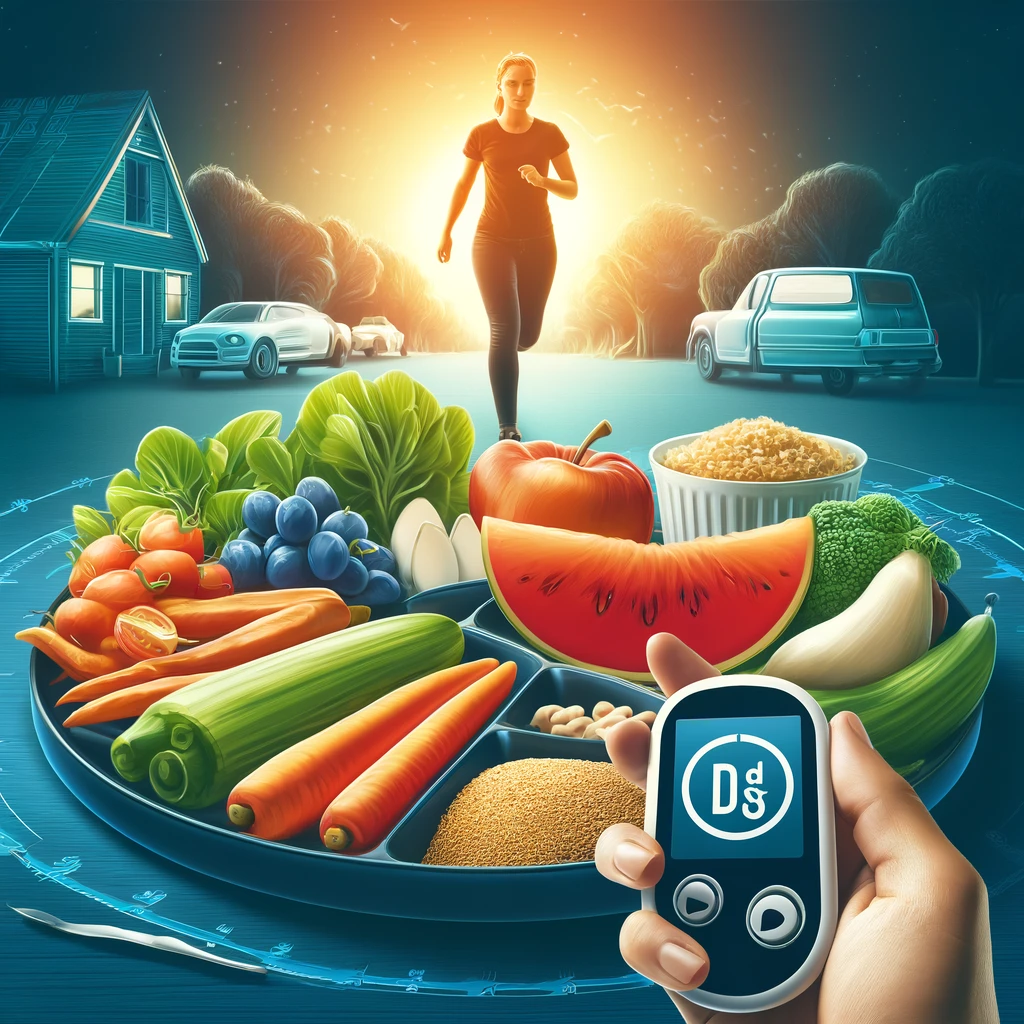Blood Sugar Control is crucial for maintaining overall health, enhancing energy, and preventing chronic diseases. Here are ten effective strategies to help you manage glucose levels:
1. Eat Foods in the Right Order
Consuming your meal components in a specific sequence can significantly impact glucose absorption:
- Start with Vegetables: The fiber in vegetables forms a protective layer in the intestines, slowing glucose absorption.
- Follow with Proteins and Fats: These nutrients further moderate glucose release into the bloodstream. Trusted Source
- End with Carbohydrates: By the time you consume carbs, the previous foods have prepared your body to handle glucose more efficiently.
This approach can reduce glucose spikes by up to 75% .
2. Add a Veggie Starter to Your Meals
Beginning your meals with a serving of vegetables can:
- Provide essential nutrients and fiber.
- Slow down the digestion of subsequent foods, leading to a more gradual glucose release.
This simple habit can significantly improve glucose control .
3. Opt for a Savory Breakfast
Starting your day with a savory, protein-rich breakfast helps:
- Stabilize blood sugar levels.
- Reduce cravings later in the day.
Examples include eggs with vegetables or Greek yogurt with nuts.
4. Recognize All Sugars Are Similar
Whether it’s white sugar, honey, or agave syrup, all sugars impact blood glucose levels. Understanding this can help you make more informed dietary choices.
Related Read: Daily Sugar Intake: How Much Sugar Should You Eat Per Day?
5. Choose Desserts Over Sweet Snacks
Consuming sweets immediately after a balanced meal, rather than as standalone snacks, can:
- Mitigate rapid glucose spikes.
- Reduce subsequent cravings.
This timing leverages the presence of other nutrients to slow sugar absorption .
6. Incorporate Vinegar Before Meals
Consuming a tablespoon of vinegar diluted in water before meals can:
- Reduce post-meal glucose spikes by up to 30%.
- Slow carbohydrate breakdown.
This is attributed to acetic acid’s effect on carbohydrate digestion . Trusted Source
7. Engage in Physical Activity After Eating
Light physical activity, such as a 10-minute walk after meals, can:
- Enhance glucose uptake by muscles.
- Aid in maintaining balanced blood sugar levels.
This practice utilizes glucose for energy, preventing excessive blood sugar elevations .
8. Opt for Savory Snacks
When snacking between meals, choose options rich in protein and healthy fats, such as:
- Nuts.
- Cheese.
These choices prevent unnecessary glucose spikes and keep you satiated longer.
9. Combine Carbohydrates with Other Nutrients
Avoid consuming carbohydrates alone. Instead, pair them with:
- Proteins: Help moderate glucose release.
- Fats: Slow digestion and glucose absorption.
For example, add avocado to toast or pair fruit with nuts to stabilize blood sugar levels.
10. Focus on Nutrient Quality Over Calorie Counting
Instead of solely counting calories, emphasize the nutritional content of your food:
- Prioritize whole, unprocessed foods.
- Choose options rich in fiber, protein, and healthy fats.
This approach supports better glucose management and overall health.
Conclusion
Implementing these Blood Sugar Control strategies can lead to improved energy, reduced cravings, and a lower risk of chronic diseases. By making mindful choices about food combinations, meal timing, and physical activity, you can effectively manage your blood sugar levels and enhance your overall well-being.
Read More: Natural vs Refined Sugar: What’s the difference?
Read More: 11 Reasons Why Too Much Sugar Is Bad for You

